|
contributed by Elizabeth Russell* I’ve been thinking about change, and the stories we tell ourselves about it. Dorothy gets launched into the spinning sky by a great storm and placed down in an enchanted land. Countless fairy tales have us walking through the dark woods--sometimes lost, sometimes cold, but eventually coming to a new and better place. Stories of change are endless because change is a fundamental principle of our lives. These stories teach us how to get from one place to another, how we emerge from one state into something new, how butterflies and spring arise from a barren earth. The thing about change is it comes, indifferent to the manner in which we meet it. With time and with luck, we develop or adopt tools to mark the path for ourselves as we go. This personal mapping is a way of acknowledging the place in which we find ourselves, a way of marking the moment. This simple act of marking initiates a cascade effect – we become self-aware, we see the arrow on the map that says, “You Are Here”, and we make choices about the next step. When we miss the chance to pause and take stock, we can get off course pretty easily. It might be a gradual drift, or it could be an abrupt U-turn. Either way, we breeze past the milepost that reminds us, “You Know Where You Are” or “Someone Has Been Here Before”. When we do pause enough to reflect -- and if we have tools at hand like creative process, meditation, or a supportive connection with ourselves & community -- we find a way to name where we are, to give it shape. We give it a shape that is particular to this place at this time, and we create it from the resources at hand. Those materials are absolutely determined by the surrounding circumstances – on a path through the woods we might stack rocks; at the kitchen table we have a long heart-to-heart with a friend; in a Cairn workshop we shape clay. In meditation, this can be the simple act of noticing ‘thinking’ and returning to the breath; or the sudden clarity of presence that washes over you while standing at the sink. A guiding image or a searing insight can emerge from this attentive frame of mind. It’s these images and insights that become embedded in our consciousness as markers of where we’ve traveled & what we’ve learned. We can use those markers to evolve a sense of our personal narrative, giving it coherence and perspective. The terrain shifts as we continue into life. We give ourselves these moments to help us tell the story of where we are, how we got here, and what might be next. They are how we tell the story of our own changes--how we make choices and what we learn from them. Last October in Portland, Oregon, The Next Cairn exhibition and workshops provided a special opportunity to mark the path--for me and, I would imagine, for all who participated. With the support of our community we carved out a moment in time to pause, reflect, and give a shape to the past, present and future. When we give expression to these moments, it’s like divining. We consult the creative intelligence within us as a means of navigating the changing inner and outer terrain. And that’s what we did, with deep thanks to Corinne Peterson for guiding the process and helping us to reveal our personal paths forward. 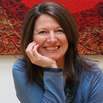 Elizabeth Russell is the director of Be Space Integrative Arts in Portland Oregon. Last year, she joined forces with several other volunteers to share Corinne’s work in three public workshops and also a private offering to Outside In, which provides services to homeless youth. www.bespacepdx.com, www.lifeartbeing.org. http://www.thecairnproject.com/ https://www.facebook.com/cairnproject/ https://www.instagram.com/cairnproject/
0 Comments
contributed by Kara Jefts* I joined the Cairn Project in 2016 to talk with Corinne Peterson about the ways in which her work with the community could be archived. (1) Through Shaping Life, Shaping Clay workshops, Peterson has been building not only a cairn, but also an archive of experience from the individuals who participate. However, there is one problem with presenting this project this way: the stories are literally locked in stone. History becomes meaningful when we see ourselves in it, and archives play a big role in that. Making art with the community, as Peterson has done, creates an opportunity for individuals to publicly share components of their lives, an experience that many find to be empowering. By enabling an outlet for sharing, artists are helpful healers. Peterson has many moving and memorable experiences to recount from her role leading Shaping Life, Shaping Clay workshops, but few stories have been written down. In a discussion about how to highlight community members through archives, it is important to also recognize that some people prefer to process experience by looking inward, and not everyone cares to share publicly, particularly on the subject of trauma. Without the need for words, the stones shaped by thoughtful hands hold the memories of their maker. Anyone who has had the pleasure of exploring the cairn at past exhibitions can attest to the power embedded in each ceramic object. Nevertheless, after meeting hundreds of brave and hopeful individuals, Peterson recognized that the Cairn Project, as a memorial to trauma and healing, could fulfill a more complex role. If she could manage to record stories, and pair these stories with stones, then the memorial could become a historical record, with written experience to illustrate relatable and inspirational accounts of life in the present for future generations. 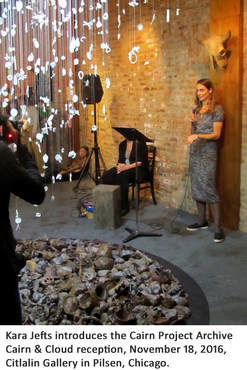 Building an archive driven from the stones and stories shared at Shaping Clay, Shaping Life workshops will take a great deal of effort, but the steps to achieving that goal are not necessarily complex. Each stone has been photographed individually, and these photographs are waiting to be paired with records that connect them to individuals. To maintain sensitivity and privacy, the stones will be matched with participants by first name. Once each stone has been paired with its maker, the photographs can be shared digitally, and an invitation will be extended through individual contacts and workshop organizers to invite a recollection of experience: recounting the workshop itself, or the experience brought to the table that day. History is constructed from the remnants of what is left behind. The problem with this is that the historical record is flawed and not everyone is represented. Archive collecting priorities are often driven by the power of individuals and institutions, and the responsibility for keeping a record of everyday experience falls to the individual. Peterson and I have mused over the Cairn Project archive’s potential as a way of making sure every single workshop participant, over 550 individuals, is represented by stone or by story. That is our dream for the archive, and bit by bit, we hope the community can help to create and maintain this history, and honor each individual’s experience in this way.  *Kara Jefts is a professional archivist. She received her Master of Arts in Modern Art History, Theory, & Criticism, at the School of the Art Institute of Chicago. Kara has been archivist for the Cairn Project since September, 2016. http://www.karajefts.com/biocontact.html (1) See the website Kara Jefts built to hold the archive. Next Week’s Post: Guest Elizabeth Russell, of BeSpace Integrative Arts in Portland, Oregon, discusses Choice Points and The Next Cairn http://www.thecairnproject.com/ https://www.facebook.com/cairnproject/ https://www.instagram.com/cairnproject/ contributed by Dr. Carroll Cradock (1) Very often, and particularly in times such as these, the suffering of people prompts us to want to turn away from seeing it. Yet, public and collective art works such as Cairn & Cloud offer us the opportunity to witness the depth of trauma in ordinary people and their courage in facing it. This courage enables them to be transformed into stronger, more beautiful human beings. We see their valor in facing it both alone and together. Forming clay as witness to trauma I was privileged to participate in this work when I joined Corinne in leading workshops at El Circulo, a center for Mexican-American women in Brighton Park and at Sarah’s Inn, an Oak Park community organization dedicated to improving the lives of those affected by domestic violence. At each workshop, I saw women seated side by side reach for the clay to re-create their trauma and express their hope. As they shaped the clay, some talked about their experiences and hopes and others did not. But each of them witnessed the trauma and transformation of the others as they embraced their own. Collection of clay works in Cairn & Cloud a witness to trauma Today we all witness and are inspired by the courage of each and all who created this magnificent collective artwork by facing the truth of their own terrible and merciless experiences. The witness of this collective artwork is all the more powerful for its eloquent silence. El Ojo Que Llora in Lima, Peru – Witness to victims of terrorism in Peru Before they began to shape their clay at the workshops, the women viewed images of other collective art works. Among these was a labyrinth, a magnificent memorial to the very ordinary people of Peru—over 70,000—who were murdered during 20 years of terrorism that ended in 2000.  The sculptor Lika Mutal, my dear friend, who died just over a week ago (November, 2016), created the labyrinth, El Ojo Que Llora or The Eye That Cries, in a city park in Lima. Yes, she put this memorial to victims of terrorism right in a city park so that as many people as possible could witness the importance of the lives of these very ordinary people---people who would otherwise be forgotten. The labyrinth stones commemorating each person were also made by very ordinary people who are relatives and friends of those who were killed. El Ojo Que Llora began with the vision of one woman who mobilized others to help her create that memorial. Cairn & Cloud also began with the vision of one woman, Corinne Peterson, whose dedication to this vision mobilized so many to support the transformation of those who have suffered trauma. Without doubt, this commitment to honor and transform the suffering of ordinary people which came toward us from Peru is now joined with Cairn & Cloud. No doubt it will inspire those in other places, beginning with Portland, Oregon, to witness to and transform the trauma of ordinary people. A Place to Sustain and Extend this Witness As the mission of Cairn & Cloud spreads, its expression created first here in Chicago needs a home. We are seeking a public location that will welcome Cairn & Cloud for now and the future: an indoor space (since it is made of clay), where people will see it as they enter or walk through the place. We hope you will think about this and send us possible locations that may welcome Cairn & Cloud. Please send your ideas to cairnprojectchicago@gmail.com. 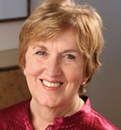 Carroll Cradock, Ph.D., a psychologist for over 30 years, works in the West Loop counselingadultsadolescentschildren.com/. She teaches International Psychology at the Chicago campus of Chicago School of Professional Psychology. She has been engaged with the Cairn Project from its beginning. She is also a weaver whose tapestries currently focus on themes of good and evil. (1) Edited version of Carroll Cradock’s speech at Cairn & Cloud reception at Citlalin Gallery, November 18, 2016 Coming Posts Reflections from The Next Cairn in Portland, an extension of The Cairn Project Guest posts by Elizabeth Russell and Kara Jefts http://www.thecairnproject.com/ https://www.facebook.com/cairnproject/ https://www.instagram.com/cairnproject/ I loved the stacks of rocks on the corners and edges of fields on Minnesota farms like the one where I grew up. Farmers moved them there from the fields where glaciers dumped them; otherwise the fields couldn’t be cultivated or seeded for crops. I didn’t know as a child that the rock piles I climbed are cairns, a Gaelic word that comes to us from the Scottish Highlands. Wikipedia says a cairn is “a human-made pile (or stack) of stones…that have been used for a broad variety of purposes, from prehistoric times to the present.” All over the world, people have piled rocks to bury their dead, to mark paths, and to remember special places. Since Cairn & Cloud takes inspiration from cairns, let’s visit some examples. Ancient Burial Cairns In 2012, I was exploring ancient rock carvings in Tanumshede, Bohuslän(1), Sweden and was surprised to come across a huge 5000 year old burial cairn. Later it inspired me to start the Cairn Project, in which hundreds of clay rock forms were piled together to create a cairn. But in our case, what was “buried” were the personal experiences of trauma and pain of the people who shaped them. Commemorative Cairns If you tour Robben Island in South Africa(2), the guide will likely point out a cairn in the rock quarry, where 1300 political prisoners of apartheid were forced to work. Nelson Mandela spent 17 of his 28 years of imprisonment on Robben Island. In a 1995 reunion of ex-political prisoners, Mandela spontaneously put down a stone in the middle of the quarry. As each former prisoner followed suit, a cairn was formed, an impromptu memorial of their history on Robben Island. Landmark 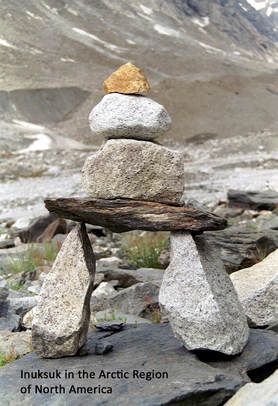 Inuksuk, a type of Arctic cairn, has its roots in Inuit culture. Hundreds of these cairns are scattered through the Arctic region from Alaska to Greenland, where the landscape is predominantly the tundra biome and there are few natural landmarks. Built stone on stone (or boulder on boulder), Inuksuk most commonly take the shape of a person. Wikipedia suggests “they may have been used for navigation, as a point of reference, a marker for travel routes, fishing places, camps, hunting grounds, places of veneration, drift fences used in hunting or to mark a food cache.” Enukso Point on Baffin Island, designated a National Historic Site of Canada, has more than a hundred Inuksuk.(3) Devotional Cairns Look along paths, roadsides and rivers in regions where Tibetan Buddhism is practiced in Tibet and Nepal, and you will find mani stones.(4) You will come across mounds and walls of rocks inscribed with a mantra, a form of prayer. Most often the mantra is “Om mani padme hum” which translates to "Hail to the jewel in the lotus." In the Cairn Project, we often thought of this expression when we created forms to represent our basic inner light and beauty. Cairns to Mark a Path If you’ve hiked in rocky terrain, you may have seen rock piles created to help you stay on the path. Psychologist Gretchen Schmelzer(5) writes in a blog post, Finding a way forward when the path isn’t clear, about how important such guides can be for travelers in life, as well as on a foggy forest path. Schmelzer’s words inspired Marcy Setniker’s choice to attend a Cairn Project workshop in Chicago and her decision to bring the project to Portland, Oregon (more about the Cairn Project in Portland in a different post). Artist-made Cairns Take a walk into Cornell University’s Sapsucker Woods Sanctuary and you will find Sapsucker Cairn, created by Andy Goldsworthy in 2008 at the end of eight years as a professor at Cornell. In an article marking that occasion, Goldsworthy said his work “is an ongoing effort to come to grips with impermanence and the relentless force of time.” Goldsworthy is a sculptor, photographer and environmentalist renowned world-wide for his site-specific sculpture and land art placed in natural and urban settings. Spontaneous Cairns
I see that my niece’s family felt the same way when they vacationed on Minnesota’s north shore. At the edge of Lake Superior, they couldn’t resist trying their hand at cairn-building. Have you made a cairn? Or seen one? Or heard about a cairn you would like to see? I would like to know about it. Please add your comment to this blog post. (1) Vitlykke Rosen Round Cairn, https://en.wikipedia.org/wiki/Rock_Carvings_in_Tanum (2) More about Nelson Mandela https://en.wikipedia.org/wiki/Nelson_Mandela (3) Inuksuk entry in the Canadian Encyclopedia http://www.thecanadianencyclopedia.ca/en/article/inuksuk-inukshuk (4) More about Mani stones – http://babelstone.blogspot.com/2006/11/mani-stones-in-many-scripts.html (5) Gretchen Schmelzer, author of The Trail Guide, a Web-mag intended to support the healing of repeated trauma. http://gretchenschmelzer.com/blog-1/ (6) Andy Goldsworthy https://www.artsy.net/artist/andy-goldsworthy-2 Coming Blog Posts Reflections from The Next Cairn in Portland, an extension of The Cairn Project Guest posts by Carroll Cradock, Kara Jefts, and Elizabeth Russell Contributed by Marsha Baker* Babies tell stories through their bodies. They grab with their eyes and hands. They reach with their mouths. They move toward excitement and away from danger. All of this, when things go well, happen in the “circle of security”(1) provided by the caregivers who love and watch over them. Babies enter the world seeking a secure and protective relationship It is a basic tenet of attachment theory that babies enter the world seeking a secure and protective relationship with an adult. Children can most fully explore their worlds when they can get supportive, nurturing encouragement and reassurance from their main caregiver. When someone has experienced trauma in their own past, parenting a vulnerable and dependent infant may trigger unexpected worries, fears and intense reactions. Often the work of an Infant Mental Health specialist is to help parents reflect on their own pasts in the context of seeing the world through their baby’s eyes in order to provide that secure base and nurturing joy. Because the awful truth is that trauma is everywhere. And the hopeful truth is that relationships can be repaired – but repairing relationships takes a lot of educated support. Rules to develop a safe place In a past post, I mentioned a parent/child drop-in group that was developed to address the effects of multi-layered trauma on parents and young children living in the Little Village community. See article about it. The group met weekly, and after every group meeting facilitators met to reflect and plan. We developed a set of “rules,” some of which were highly relevant for the development of the Cairn Project. The essentials were:
Transition from Drop-In Group to Cairn Project Workshop From our cumbersome beginnings (we would drag tons of materials and stress with technology), Corinne and I created a template for workshops that provided our own “Circle of Security” for participants. The workshop encouraged creativity, exploration and reflection and provided a place to celebrate and contain powerful emotions that were generated. The transition from Parent/Infant Drop-In group to Cairn Project workshop was fluid. While both populations and activities were distinct, the overarching goals were similar - developing capacities, creating community, promoting emotional safety. A key difference was that workshops were a one-time event, and the meaning that participants derived from participating lay in their own stories, sometimes shared and sometimes not. This is why the installation of ALL of the rocks and tokens of light became so important. And this is why recording people’s stories began to take on a significance that we did not understand at the beginning of the project. Stay tuned!  *Marsha is a pediatric occupational therapist and infant mental health specialist. She earned her master’s degree in child development and certification in infant mental health from Erikson. Most of her career has been working with families of young children with a focus on nourishing the parent/child relationship. At the Erikson Institute, Marsha saw her work with families through a trauma lens. She recognized that the development of young children is affected by the experience of trauma around them. (1) Link to Circle of Security International Coming Posts
Today is the Winter Solstice. The sun’s daily path, as we perceive it from Earth, has stopped. The earth’s axis that has tilted away from the sun is about to shift and tilt towards the sun. Chicago’s daylight has shrunk to nine hours. For my Swedish relatives near Trondheim, Norway, daylight has shrunk to four and a half hours. It is a moment that happens at the same time throughout the planet. The pause in the earth’s natural rhythm invites us to stop, too, and reflect on what this astronomical phenomena means to our earth and to us as humans. Aligned Rocks and Festivals In ancient times, knowing when winter’s dark days would begin to lengthen was important news. Any people trying to make their food supplies last until plants would grow again followed the astronomical signs. Evidence of this day’s significance is seen in structures of stone aligned with the rising or setting sun on the solstice. Examples: Stonehenge in England. The passage tomb at Newgrange in Ireland. In Sicily, Italian archaeologists found a 5000 year old rock formation with a 3.2-foot diameter hole, aligned with the winter solstice sun. From ancient times to today, people have celebrated the shift towards light in this time of darkness, whether specifically speaking of the solstice or not. Among contemporary celebrations are Hannakuh, Christmas, Kwanzaa and Eid Al-Fitr. Respect for Rhythm Scientific studies on the rhythms of both animals and humans have shown how tied our bodies are to nature’s cycles, whether we think about and respect them, or not. Richard Heinberg wrote in his book, Celebrate the Solstice: “Today….we human beings have created a situation unique in nature, as well as in the history of our own species. We have gradually but decisively cut ourselves off from many of the cycles of the cosmos and of the biosphere and substituted arbitrary, economically determined temporal patterns. We have overridden the natural daily rhythms of light and dark with the artificial illumination of cities; the rhythms of the seasons with greenhouses and supermarkets, jet travel and central heating. Electromagnetic fields from power lines, house wiring, and appliances drown out subtle geomagnetic signals from the Earth. Clock times has replaced Sun and Moon times; nanosecond computer time makes heartbeat time imprecise and irrelevant.” (1) Heinberg’s book offers information about solstice festivals ancient and current and guidance for people interested in creating solstice rituals of their own. For many of us, the ability to celebrate during this dark time of year may be difficult. If we have suffered trauma, we may find it hard to open our hearts to the dark we experience inside ourselves. The challenge is to find safe and meaningful ways to consider our lives and to turn towards the light. This week, I chanced on Jeff Brown’s summary of the situation in our culture in his article, Praises For The Trauma Speakers – Let Them Whisper Your Heart Back To Life. “We are only just beginning to understand the nature of trauma on this planet. We are only just beginning to understand that we are all trauma-survivors, to one degree or another. We are only just beginning to listen to the real story of our lives, after generations of denial, victim-bashing, ungrounded attempts to ‘rise above’ it.” (2) The challenge for each of us to create safe places where we can be still and listen deeply to ourselves.
(1) p.22, Celebrate the Solstice: Honoring the Earth’s Seasonal Rhythms through Festival and Ceremony, 1993, Quest Books (2) The Urban Howl, November 23, 2017 Coming Posts
Contributed by Kara Jefts*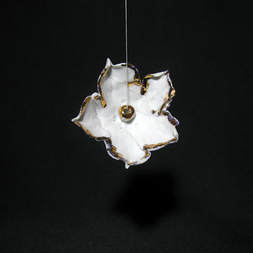 What are the Stone's Stories? The multi-faceted Cairn Project has enabled hundreds of individuals to reflect on personal experience through art making. To me, what is so moving about the project is that each stone and token of light were literally shaped by personal experience: where feelings of pain and resilience were worked through and into the malleable clay. When all of the people who have participated are memorialized in the Cairn and Cloud installation, the pieces they created are powerful in their permanence, but I, and I expect most viewers, can’t help but be curious: what are their stories? Photos of Each Stone and Token to be Archived One aspect of the project that Peterson deliberately maintained was a system for documenting who shaped which stone. When dealing with hundreds of objects, many of which are difficult to differentiate in their abstract form, this was a monumental task. It is these records that are the foundation of the archive now in development. 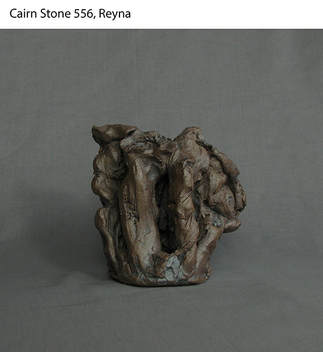 Each ceramic stone and porcelain token has been photographed individually, with the same attention to detail that is typically paid to objects in a museum collection. These images, numbering well over 1,000 photographs, will be entered into a digital archive paired with the individual makers and their stories, molded into stone. This archive effort, also monumental, is still in process and will require volunteers to edit the photographs and to pair each record with the individual who made it. Once the records are compiled, they will be posted on the Cairn Project website so that participants can revisit the ceramic forms they created and reflect on the shared experience of the project. Digital Archive Presents Each Stone as Valuable In its physical form, the Cairn and Cloud installation represents a chorus of voices singing in unison. In contrast, by separating out individual participants and their contributions, the digital archive presents each stone as a valuable object in itself, worthy of appreciation; just as each person and their life experience is worthy of attention and respect. The archive on the website will provide easy access to an illustrated history of the lives of hundreds of Chicagoans as well as lives of those who participated in satellite workshops outside of the city. As the website expands, it will include not only the record of each ceramic piece created, but it will also aspire to create a platform for understanding and will continue to inspire audiences in and beyond Chicago. The archive will exist as a forum for those who don’t pen our shared history per-se, but instead, are the reason for its writing. *Kara Jefts is a professional archivist. She received her Master of Arts in Modern Art History, Theory, & Criticism, at the School of the Art Institute of Chicago. Kara has been archivist for the Cairn Project since September, 2016. http://www.karajefts.com/biocontact.html Contributed by Marsha BakerI am pleased to introduce Marsha Baker, OTR/L, M.Ed., as our first guest blogger. When she first took my clay class, I was unaware of her expertise. But when she volunteered to help develop the clay workshops for the Cairn Project, I discovered what a valuable resource she would be. Marsha is a pediatric occupational therapist and infant mental health specialist. She earned her master’s degree in child development and certification in infant mental health from Erikson. Most of her career has been working with families of young children with a focus on nourishing the parent/child relationship. At the Erikson Institute, Marsha saw her work with families through a trauma lens. She recognized that the development of young children is affected by the experience of trauma around them. I became involved in the Cairn Project when it was a gleam in Corinne Peterson’s eyes. More accurately, “The Project,” as we called it, found me at a time when I had just retired and was looking for a new chapter in my story…  Clay and Occupational Therapy Ceramics was required for enrolling in the school of Occupational Therapy at the University of Illinois in the 1970’s. I enrolled in ceramics and immediately fell in love with the feeling of the clay turning on the wheel. The feeling stuck with me until I finished school. The origins of Occupational Therapy hark back to 18th century Europe where Drs. Philippe Pinel and Johann Reil radically reformed hospitals by using work and leisure activities instead of barbaric chains and restraints to treat patients with “mental” disorders. This approach was part of the “moral treatment” era in Europe’s age of enlightenment. Later in the 20th century, one observer of this approach at Bellevue Hospital stated, “In the psychopathic ward the hand work with the bright colors and pleasant surroundings of the shop have been found to clear bewildered minds. Men as well as women have been found to work enthusiastically at scarf weaving, making rag rugs, toy designing, every sort of pleasurable hand work.” This nostalgic musing seems far removed from the current state of mental health treatment. However, the idea that creative pursuits and working with one’s hands in a supportive environment can be healing is a cairn(1) on my journey to “The Project.” Earning an Infant Mental Health Certificate I began working with families of young children immediately after graduating as an occupational therapist. Although I loved being helpful and providing “parent education and support,” something was missing. Around 2001, Erikson Institute offered a new certificate program in Infant Mental Health. A paper entitled Ghosts in the Nursery, by Selma Freiberg, was the core of this program for me. The paper is about work with caregivers of babies who are at high risk of bad developmental outcomes or being removed from their families for their safety. The paper compellingly and painfully shows how unresolved traumas from mothers’ pasts were interfering with their ability to parent their own babies. It also discusses how working with the mother’s unconscious pain, through empathic understanding, could reduce the risk of the mother’s history being re-enacted with her infant. This was my introduction to “trauma informed” work. Everybody has a story. “Difficulties arise not because we have a story, perhaps a very sad or painful story, but because we become attached to our stories and make them an essential part of our very selves.” (Rachel Freed). This is a topic for the next blog I will write.  Working for the Fussy Baby Network in Pilsen/Little Village After finishing the Infant Mental Health program, I worked for Erikson Institute’s Fussy Baby Network program for more than ten years. For me the most meaningful work was helping to design and implement a weekly drop-in group for families in the Pilsen/Little Village communities in partnership with folks from a local church. We called the group “Pequenos Exploradores,” (Little Explorers). The evolution of this group was the basis for my contribution to the Cairn Project.  The vast majority of families were community members without documents. They were raising families and missing families. The weekly drop-in group became a safe place for parents and grandparents to bring their children to play. Also it became a place to share feelings and be heard, and a place to come for support and resources. Parents and grandparents shared stories of domestic violence, fear, economic struggles, families left behind, unplanned pregnancies, community connections, and of bravery and hope for the future. The church room that housed the group was warm and welcoming. The local grocery store provided healthy snacks every week. A sister church provided accompanying services for families and volunteers. A local restaurant provided food for celebrations. We received a grant to buy new toys and equipment. Every detail was respectfully planned and discussed. Over the years the group was in existence, many stories were heard and some were changed. One morning when I was setting up for the group, I learned that my father had died. I stood in the middle of the church room crying in the arms of one of the mothers who had arrived early. I will never forget the unexpected and unbound feeling of comfort. A New Chapter Begins… I had taken Corinne’s class, Dreams, Myths and Stories in Clay, several times, and as I was leaving my work with Fussy Baby Network, I asked Corinne a question. Did she know of a community clay project I could volunteer for; murals perhaps? She asked me if I was interested in helping with this new project she was developing. And I said yes. (1) Cairns are used to mark important or sacred places and as markers along a path. Coming Posts
http://www.thecairnproject.com/
https://www.facebook.com/cairnproject/ When I got the idea for the Cairn Project, I wanted to read books that would help me to develop meaningful workshops. In this post, I will share insights from four of the books I read. My heart sang when I saw these sunlit Chinese Lantern seedpods in front of my son’s home. I paused to take them in—for longer than 20 seconds. I had learned from Rick Hanson’s fascinating book, Buddha’s Brain (1), that at least 20 seconds concentrating on something that sparks joy can increase a person’s happiness. The extended time strengthens associated neural pathways, which over time can change the balance between happiness and painful emotions in a person’s experience. From Buddha’s Brain, I learned science about the malleability of the brain, and ways to help heal the brain damaged by trauma. In designing the workshop, I thought about how to incorporate activities to increase participants’ feelings of compassion and hope, even though they were addressing their suffering. Now, some info about three books from a list Lori Walsh sent me in 2014, when she heard I was beginning the Cairn Project. Earlier she had made the list for herself in response to the National Academy of Pediatrics' new emphasis on childhood trauma. The National Academy of Pediatrics noted the huge negative effects of unresolved trauma on both mental and physical health of children continues throughout their lives.  The first of these three is The Language of Emotions: what your feelings are trying to tell you (2), by Karla McLaren. She is an empathic counselor and researcher who believes our emotions, all of them, contain “brilliant information” meant to guide us in how we deal with any situation that arises. But in our culture, feelings are very often dismissed and denied. How often are children told that they don’t or shouldn’t feel what they feel? When I was a child, I was told I wasn’t angry (though I was). As a result, I lost my ability to use my anger to take care of myself. Instead I was admonished to care for others rather than myself. McLaren helps the reader recognize anger and other emotions, both in the stuck form they take when unacknowledged, and in the flowing form that can guide wise living. She also suggests practical ways to work with any feeling state. I found her insightful and practical teachings empowering and helpful in the development of the workshops. Time after time, workshop participants expressed surprise over how good it felt to form the clay to express their pain. One woman exclaimed, “I never knew trauma could be so beautiful.” 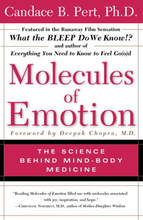 Molecules of Emotion: why you feel the way you feel (3) is Dr. Candace Pert’s memoir of her life as a researcher. She records the challenges of working as a woman in a male dominated research world, and she reports how she eventually overcame obstacles to her ability to formally test her intuitions. We benefit today from her discovery that emotions are stored in the body’s receptors and determining that emotional expression is key to integrating mind and body. You can link to a site (http://candacepert.com) featuring her life and contributions to the field of Mind-Body Medicine, the dawn of Psychopharmacology, and the drugs, like Peptide T, which she was testing for HIV, Alzheimer’s, Autism, and brain injury.  Mended by the Muse: Creative Transformations of Trauma (4) is a memoir by psychoanalyst, painter, and holocaust survivor Sophia Richmond. This book was not cheap and the longer reviews I wanted to read had to be purchased. But I’m so glad I bought it. Sophia Richmond helped me articulate why I believe clay saved me and why I believe in the value of using clay to help others. When workshop participants dismissed their experiences of stress and loss as insignificant, I would say: “Your suffering is worthy of compassion.” I would quote Sophia Richmond, who describes trauma as falling on a continuum “ranging from the inevitable losses that we experience in our daily lives due to the human condition to exposure to extremely violent and catastrophic events outside of common human experience.” She adds “…creative action is one of the most effective ways of coping with trauma and its aftereffects.” (5) She continues throughout the book to show how she came to this conclusion, and she gives specific examples of how mending happens. You may listen to an evocative interview of the author following the book's 2014 publication on YouTube (https://www.youtube.com/watch?v=yCBJTVq_62A). I highly recommend this book for art therapists and others using the arts to help people deal with trauma. Here are more books I’d love to talk about, but there’s no more room in this blog! What books have you read that have helped you face trauma-- in your personal life? in your professional life? Please comment! Coming Posts:
(1) Buddha’s Brain: the practical neuroscience of happiness, love & wisdom, Rick Hanson, Ph.D. with Richard Mendius, MD., New Harbinger Publications, 2009. See http://www.rickhanson.net/books/buddhas-brain . (2) The Language of Emotions: what your feelings are trying to tell you, Karla McLaren, Sounds True, 2011. (3) Molecules of Emotion: why you feel the way you feel, Candace B. Pert, Ph.D., Scribner, New York, 1997, http://candacepert.com/ (4) Mended by the Muse: Creative Transformations of Trauma, Sophia Richmond, psychoanalyst, painter, holocaust survivor, Routledge: Taylor & Francis Group, New York and London, 2014. Read short reviews on the following sites. https://www.amazon.com/Mended-Muse-Creative-Transformations-Psychoanalysis/dp/0415883644 (5) page 3, Mended by the Muse. http://www.thecairnproject.com/
https://www.facebook.com/cairnproject/ When we begin a day, we can never know just who or what might cross our path and how that “crossing” will impact our lives.  You’re “crossing paths” with our new blog, the Cairn & Cloud Chronicle! In the Cairn Project, we experienced the power of the creative arts to help us mend from the effects of trauma. The chronicle will be a place where those involved in the Cairn Project can continue to share their stories and where others will be inspired to tell theirs as well. Here people can learn of and share resources for continuing creative healing work. We will share news of the Cairn Project and other happenings that address healing from trauma. In this first post, you can learn:
Hundreds have crossed paths with the Cairn Project Here’s a brief summary of the Cairn Project with a link to more. Between 2014 and 2016, I, with many people assisting, developed and led the Cairn Project. First, in Shaping Clay, Shaping Life workshops, participants formed “rocks” of stoneware clay to hold their experiences of trauma. They also created small porcelain tokens of light to represent their inner light and hope. In public gallery spaces, the rocks were piled to form a memorial cairn with the tokens of light hovering like a cloud above it. The light over dark became a collective expression of trauma and hope. Read more on the Cairn Project Online Archive.  How “crossing paths” with a 750,000-volt proton atom splitter led to the Cairn Project I saw a real, but no longer used, atom splitter in the Elmhurst College Accelerator Art Space, while viewing the exhibit of my friend, Rebecca Wolfram. It was February, 2014, and that is when I conceived of the Cairn Project. The atom splitter reminded me that a primary motivation for my artwork is to explore and give voice to my inner experience of “splitting” due to traumatic childhood experiences. At the time I was also reading books and articles on brain research into how trauma causes people to split off from a part of themselves, and what can contribute to healing such brain splits. I asked myself, “If I were to make a new sculpture about this, what might it be?” Several thoughts hit me:
What happened when Marcy Setniker crossed paths with the Cairn Project A year and a half ago, Marcy Setniker of Portland, Oregon, happened to hear about the Cairn Project from my son Tim, a co-worker. Her heart was so drawn to it that she spearheaded an extension of the project, The Next Cairn, in her city. She wanted to experience it herself, and have others experience it, too. Just this month Marcy and I co-led four Shaping Clay, Shaping Life workshops, including one at Outside In, an agency that serves Portland’s homeless youth. I was moved deeply, as I witnessed many people work with clay to express their experiences of trauma. Coming Posts:
We invite you to share your ideas for future posts.
Please offer your feedback. |
Author
|



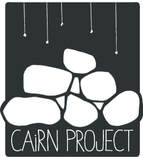


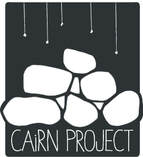




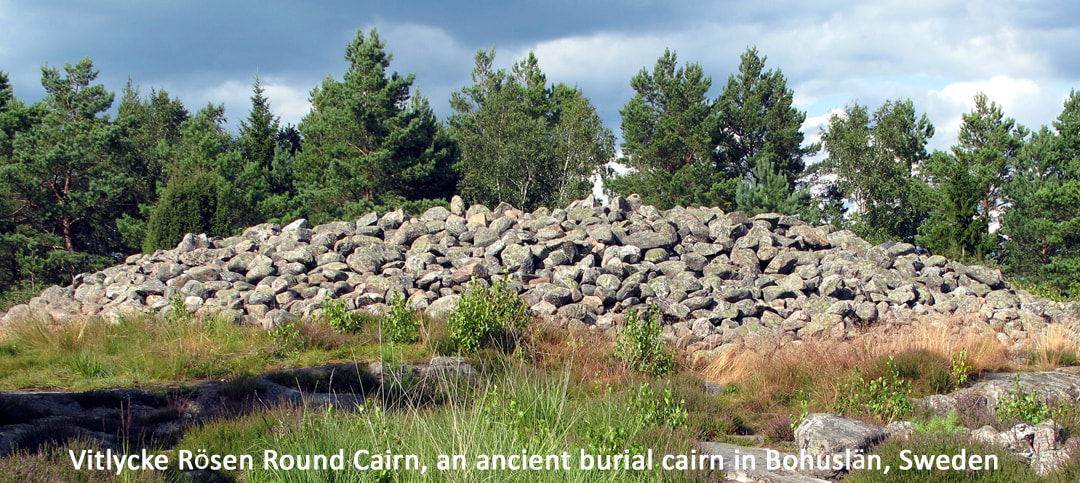
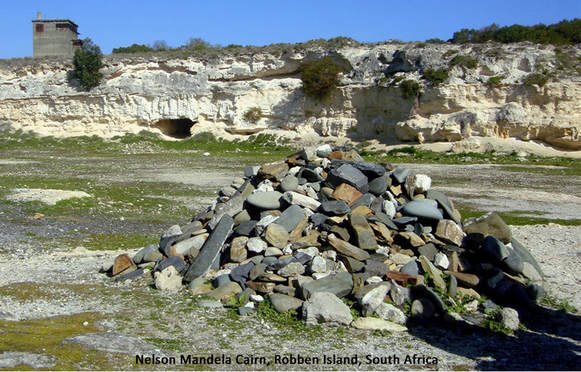




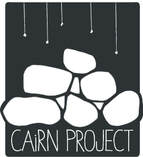

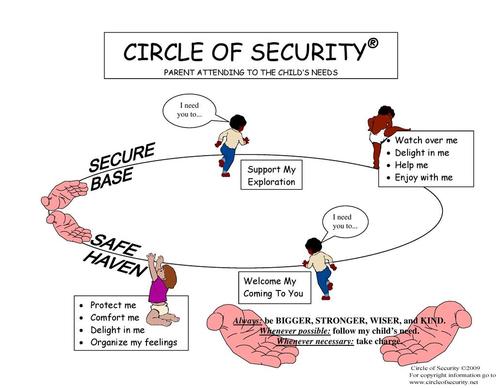
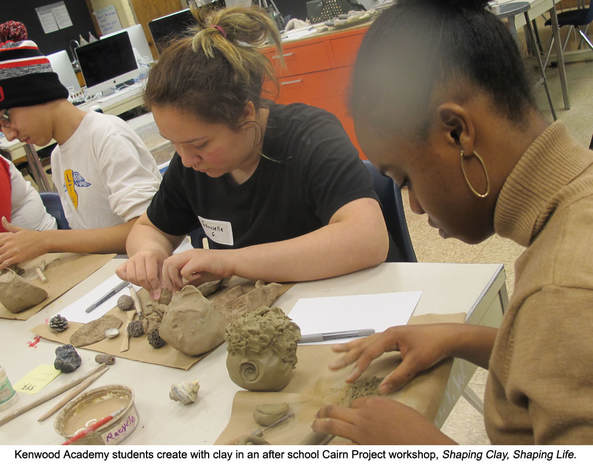
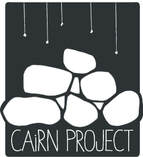



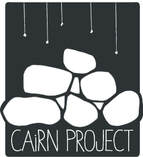


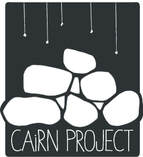
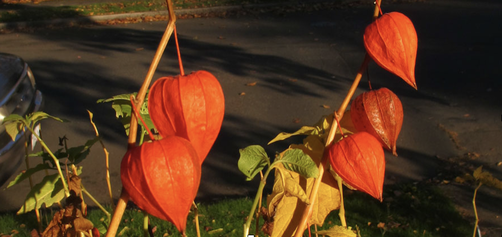


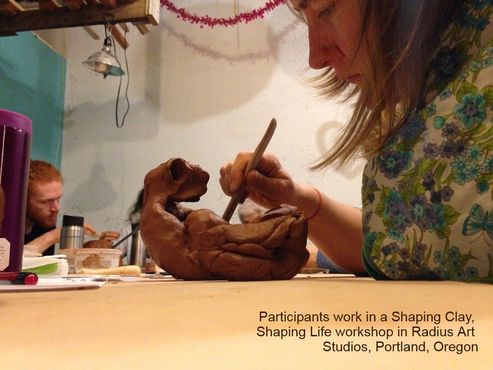

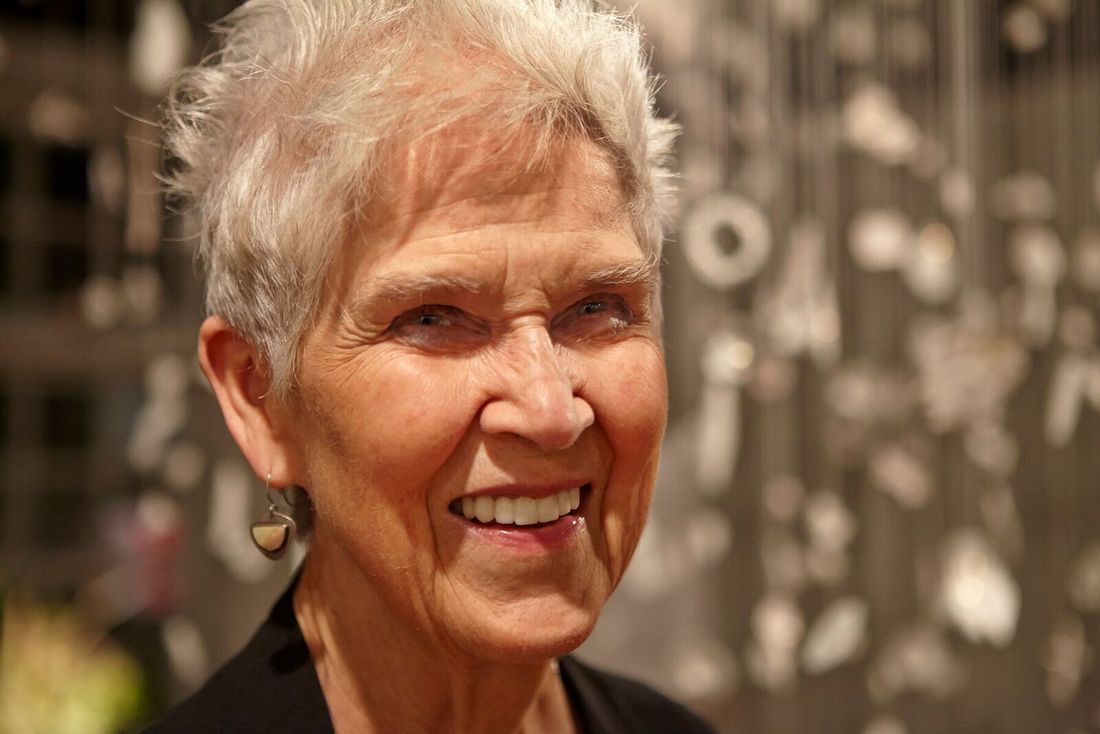
 RSS Feed
RSS Feed